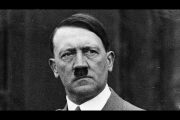
The Man of Steel used to emerge from a phone booth ready to smite evildoers. Now, we’ll see his son flutter out of the closet like Tinker Bell. And he’ll be ready for a turn between the sheets with his boyfriend.
Jon Kent, the son of original Superman Clark Kent and Lois Lane with his own comic book series, is a bisexual, the New York Times disclosed yesterday. Even worse, the youngster’s adventures include fighting fires caused by “climate change,” and better yet, protesting the deportation of illegal aliens … or “refugees” as the leftist Times calls them.
But the latest on the wokification of comics is hardly news. Superhero comics have been turning traditional superheroes into sex deviants for years. Superman is notable because his character began the superhero genre in 1938.
“Real World Problems”
Tom Taylor, who writes the Jon Kent-Superman series for D.C. Comics, glows pink with pride.
“The idea of replacing Clark Kent with another straight white savior felt like a missed opportunity,” Taylor told the Times. “He said that a “new Superman had to have new fights — real world problems — that he could stand up to as one of the most powerful people in the world.”
That doesn’t quite explain why the younger Superman had to become a homosexual, but anyway, Superman’s “love” interest is a fuchsia-haired journalist, Jay Nakamura. “Jonathan and Jay will share a kiss in a story that will be published next month,” the Times disclosed. “This month, readers will discover that Jay has special abilities.”
One might assume those special abilities aren’t arranging flowers or making the kiddies giggle at Drag Queen Story Hour.
“Jay could be the only person in Jon’s life that he does not have to protect,” Taylor told the Times. “I wanted to have a really equal, supportive relationship for those two.”
I’ve always said everyone needs heroes and they deserve to see themselves in their heroes. For so many people, having the strongest superhero in comics come out is incredibly powerful.
That’s the secondary reason to create homosexual characters. The primary reason is to normalize homosexual activity and brainwash immature comic readers. After all, if Superman is lavender on the inside, any American kid should be.
Homosexual “Superheroes” Everywhere
Of course, Superman isn’t alone. Comic-book land resembles a cabaret in Weimar Berlin.
“The coming out of Superman, perhaps the most archetypal American superhero, is a notable moment even in an age when many comics have embraced diversity and are exploring pressing social issues,” the Times reported:
Though Superman is not the first L.G.B.T.Q. hero, and will not be the last, comics experts said that there was something particularly momentous about Superman coming out.
“It is not Northstar, who your aunt has never heard of,” said Glen Weldon, the author of “Superman: The Unauthorized Biography,” and the co-host of the Pop Culture Happy Hour on N.P.R. “It’s not Hulkling. It’s not Wiccan. It’s not Fire and Ice. It’s not Tasmanian Devil. It is Superman. That counts for something — just in terms of visibility, just in terms of the fact that this is going to attract attention.”
There has been some blowback to the recent evolution charted by comics. In August, as rumors about the Superman development began to circulate, a commenter on one website complained that “Marvel and DC have ruined their characters to please the woke mob, who don’t even buy comics.”…
Batman’s sidekick, Robin, recently acknowledged romantic feelings for a male friend (not Dick Grayson — who was Batman’s partner for over four decades — but Tim Drake, a later replacement; there are multiple Robins just as there are multiple Supermen). And a new Aquaman comic stars a gay Black man who is positioned to become the title hero.
The list of homosexual superheroes is a long one: Batwoman, Constantine, Midnighter and Apollo, the Green Lantern, and his son, Obsidian. The Marvel Cinematic Universe has introduced superhero deviants, too.
The leftist Times has been pushing sodomite superheroes for some time.
“One of the earliest mainstream comics to feature gays or lesbians appeared in 1980. It was not a positive portrayal,” the newspaper reported:
In the story, Bruce Banner, the alter ego of Marvel’s Hulk, is at a Y.M.C.A, where two gay men try to rape him. Things had started to evolve by 1992, when Northstar, another Marvel hero, came out — an event that was praised in an editorial in The New York Times. “Mainstream culture will one day make its peace with gay Americans,” the editorial said. “When that time comes, Northstar’s revelation will be seen for what it is: a welcome indicator of social change.”




